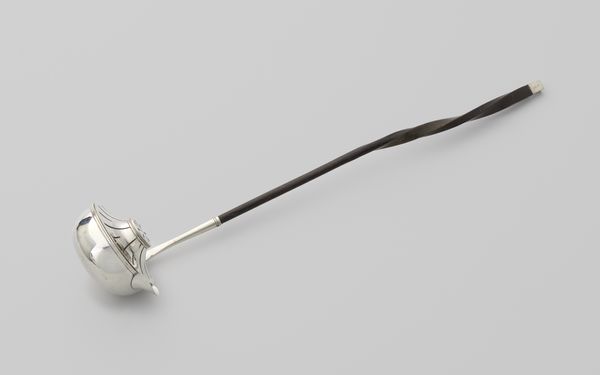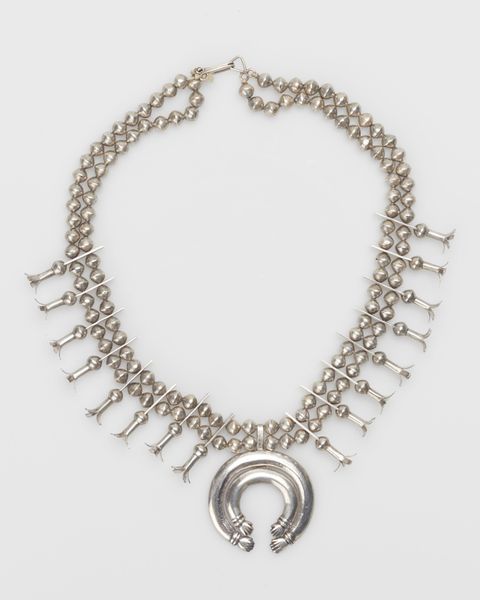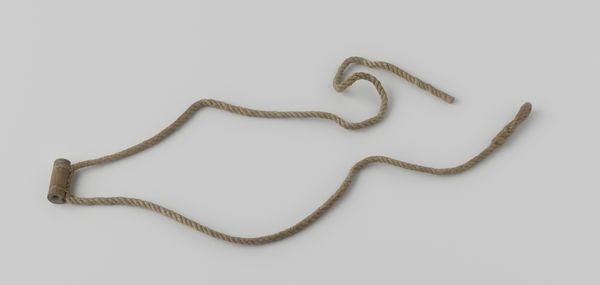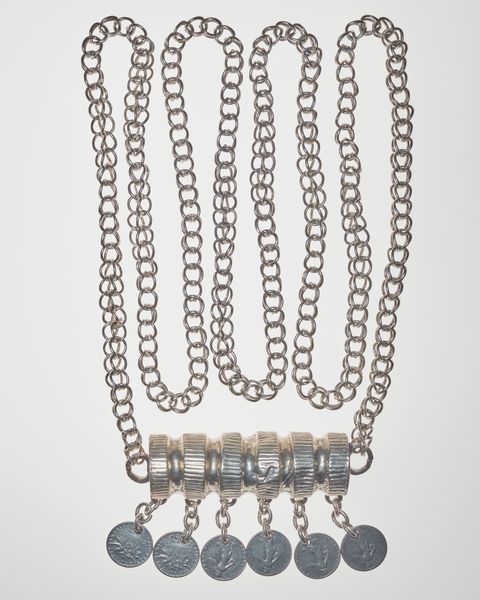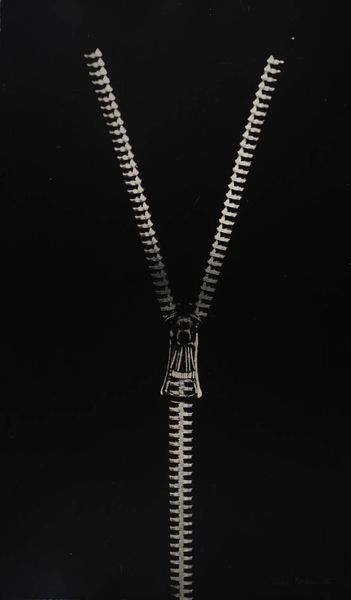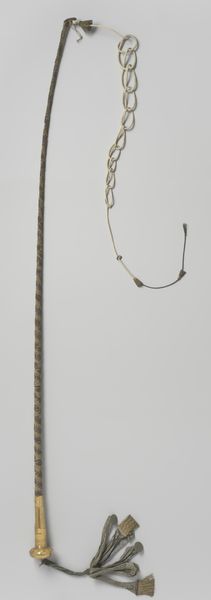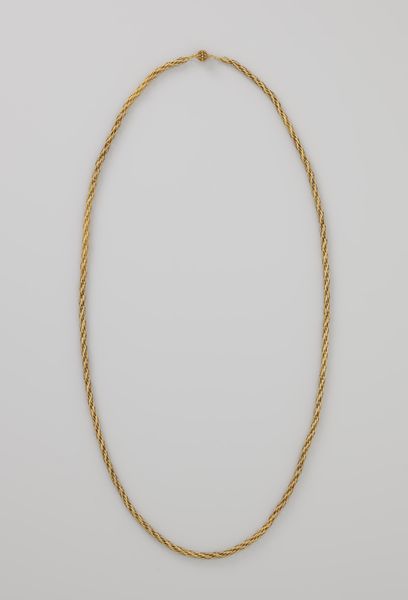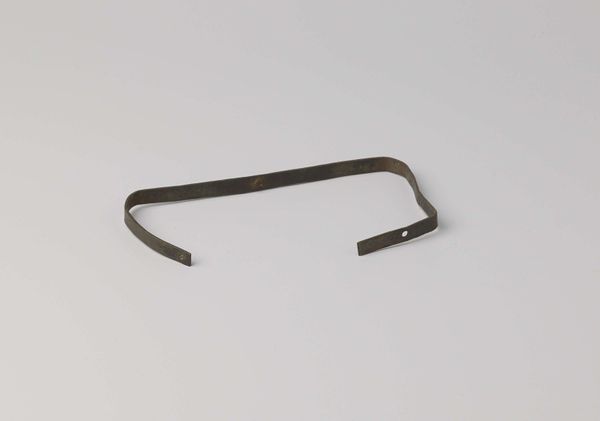
silver, metal, sculpture
#
silver
#
metal
#
sculpture
#
miniature
Dimensions: length 27 cm, height 7.2 cm, weight 52.63 gr
Copyright: Rijks Museum: Open Domain
Curator: This engaging piece is known as "Canal Boat," created around 1885-1891 by Gebr. van Straten. It's a miniature sculpture rendered in silver and other metals. Editor: It immediately strikes me as whimsical. The sharp gleam of the metal creates a striking contrast with the implied languid pace of a canal journey. The composition is linear and sparse. Curator: Absolutely, the miniature nature amplifies that sense of fantasy. Consider the symbolic weight of the tow horse. In the absence of sails, we see mankind's ability to harness and direct nature, even in miniature. The tow horse represents both control and a symbiotic relationship. Editor: True. The extended chain visually underlines the tension—the distance and implied force involved in this method of propulsion. Its very form seems to question the utility; it seems absurd yet elegant at the same time. The rigid material contradicts the notion of the journey and leisure it implies. Curator: Beyond the practicality, it touches on the cultural memory of a specific time and place. Canals were vital arteries of Dutch commerce. The canal boat therefore can be seen as an emblem of national identity and pride in a certain mode of living and doing business. It reflects a world powered by human effort, animal power and careful planning. Editor: And yet, even at the time, the advent of steam power must have rendered scenes like these quite rapidly obsolete, transforming the imagery from practical reality into pure nostalgia. The material lends to that timelessness: as a sculpture of shiny metal, its pristine aspect allows the artwork to persist. Curator: Exactly. So the choice of materials amplifies the lasting cultural impact of those scenes. What begins as a familiar symbol of navigation transforms into something nostalgic and historical. Editor: Ultimately, analyzing how its form plays with these historical associations enhances its significance. Curator: Seeing these cultural narratives made palpable is important in a world quickly moving towards globalization. Editor: I agree; analyzing the intersection between material form and meaning is crucial to unpacking its cultural richness.
Comments
rijksmuseum about 2 years ago
⋮
Most 19th-century miniatures are reinterpretations of older types. The people on this small boat and the rider are wearing 18th-century clothing, and the vessel’s decoration also harks back to earlier examples. The boat’s aerodynamic forms and large windows are, however, characteristic of a type first built only in the 1840s.
Join the conversation
Join millions of artists and users on Artera today and experience the ultimate creative platform.




